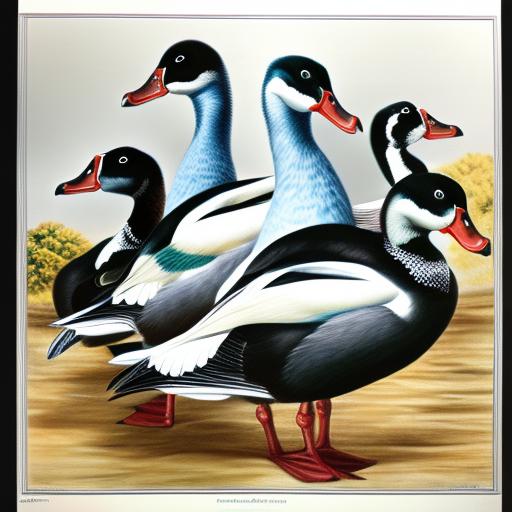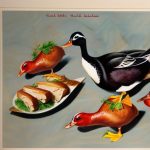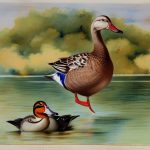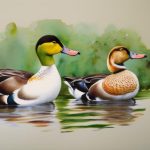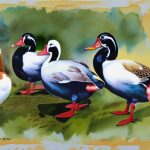Black and white duck breeds are a popular choice for many farmers and duck enthusiasts due to their striking appearance and unique characteristics. These breeds are known for their beautiful plumage, which often features a combination of black and white feathers that create a visually stunning contrast. In addition to their aesthetic appeal, black and white duck breeds are also valued for their hardiness, adaptability, and excellent egg-laying abilities. They are a diverse group of ducks that come in various sizes and shapes, each with its own distinct traits and qualities.
Black and white duck breeds have a long history and have been bred for both ornamental and practical purposes. They are often raised for their meat, eggs, and down, making them a valuable asset to many farms and homesteads. Additionally, their striking appearance makes them a popular choice for exhibitions and shows, where they are admired for their beauty and elegance. Whether you are a small-scale farmer, a hobbyist, or a duck enthusiast, black and white duck breeds offer a unique and rewarding experience for anyone interested in raising ducks.
Key Takeaways
- Black and white duck breeds are popular for their unique and striking appearance, making them a favorite among duck enthusiasts.
- These breeds are known for their hardiness, adaptability, and calm temperament, making them suitable for both backyard and commercial farming.
- Some popular black and white duck breeds include the Magpie, Cayuga, and Ancona, each with their own distinct characteristics and qualities.
- Proper care and maintenance, including providing a balanced diet, adequate shelter, and regular health check-ups, are essential for the well-being of black and white duck breeds.
- Conservation and preservation efforts are crucial to safeguard the genetic diversity and heritage of black and white duck breeds, ensuring their continued existence for future generations.
Characteristics of Black and White Duck Breeds
Black and white duck breeds are known for their distinctive coloration, which sets them apart from other duck breeds. Their plumage can range from solid black with white markings to a combination of black and white feathers that create eye-catching patterns. This striking coloration makes them a popular choice for those looking to add visual interest to their flock or farm. In addition to their appearance, black and white duck breeds are also valued for their hardy nature and adaptability to various climates and environments.
These breeds come in a range of sizes, from small bantam ducks to larger, more robust breeds. Their size and shape can vary significantly, with some breeds being more compact and others having a more elongated body type. Despite these differences, black and white duck breeds are generally known for their friendly and docile temperament, making them a great choice for those looking for a calm and easy-to-manage flock. They are also excellent foragers and can thrive in free-range environments, making them well-suited for sustainable and organic farming practices.
Popular Black and White Duck Breeds
1. Magpie Duck: The Magpie duck is a striking breed known for its distinctive black and white plumage. It is a medium-sized duck with a sleek body and an upright stance. The breed is valued for its excellent egg-laying abilities, with hens laying large white eggs regularly throughout the year. Magpie ducks are also known for their friendly and sociable nature, making them a popular choice for backyard flocks and small farms.
2. Cayuga Duck: The Cayuga duck is a beautiful breed that is known for its iridescent greenish-black plumage. While the breed’s feathers may appear black at first glance, they actually have a stunning green sheen that becomes more apparent in the sunlight. Cayuga ducks are medium to large in size and are valued for their calm temperament and excellent foraging abilities. They are also known for their high-quality meat and large, dark eggs, making them a versatile choice for those looking to raise ducks for both meat and eggs.
3. Ancona Duck: The Ancona duck is a lively and active breed known for its striking black and white spotted plumage. The breed’s feathers feature irregularly shaped spots that create a unique and eye-catching pattern. Ancona ducks are medium-sized with a slightly upright carriage and are valued for their excellent egg-laying abilities. They are also known for their friendly and sociable nature, making them a popular choice for those looking to raise ducks as pets or for small-scale egg production.
Care and Maintenance of Black and White Duck Breeds
Black and white duck breeds require proper care and maintenance to ensure their health and well-being. Providing a suitable living environment is essential, whether they are kept in a backyard setting or on a larger farm. Ducks need access to clean water for drinking, bathing, and preening, so it is important to provide them with a pond or shallow water source if possible. Additionally, ducks should have access to a balanced diet that includes commercial feed, fresh greens, and access to insects or other protein sources.
Regular health checks are also important to monitor the overall well-being of black and white duck breeds. This includes checking for signs of illness or injury, as well as maintaining proper hygiene in their living quarters. Ducks should be provided with adequate shelter to protect them from the elements and potential predators. It is also important to keep their living area clean and free of excess moisture to prevent the development of mold or bacteria.
Breeding and Reproduction of Black and White Duck Breeds
Breeding black and white duck breeds can be a rewarding experience for those looking to expand their flock or preserve rare breeds. When breeding ducks, it is important to provide suitable nesting areas where hens can lay their eggs in a safe and comfortable environment. Ducks are known for their broody nature, so providing nesting boxes or secluded areas can encourage natural breeding behaviors.
Once eggs are laid, they should be collected daily to prevent them from being damaged or exposed to extreme temperatures. If breeding for specific traits or characteristics, it is important to carefully select breeding stock that exhibits the desired traits. This can help maintain the breed standard and improve overall quality within the flock.
Black and White Duck Breeds in Agriculture
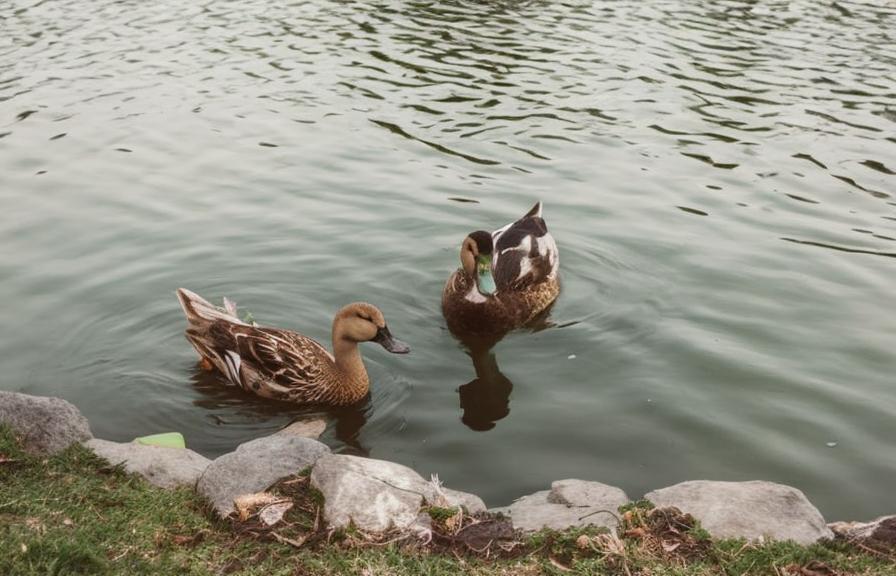
Black and white duck breeds play an important role in agriculture, providing valuable resources such as meat, eggs, down, and pest control services. Ducks are efficient foragers and can help control insect populations in agricultural settings, reducing the need for chemical pesticides. Their manure also provides valuable nutrients for soil health, making them an asset to sustainable farming practices.
In addition to their pest control abilities, black and white duck breeds are valued for their high-quality meat and eggs. Their flavorful meat is lean and rich in nutrients, making it a popular choice for many consumers. Duck eggs are also prized for their rich flavor and larger size compared to chicken eggs, making them a sought-after product in many markets.
Conservation and Preservation Efforts for Black and White Duck Breeds
Conservation efforts play a crucial role in preserving rare and heritage black and white duck breeds. Many of these breeds face the risk of decline due to factors such as industrial agriculture practices, loss of genetic diversity, and changes in consumer preferences. Organizations dedicated to the preservation of rare breeds work to raise awareness about the importance of genetic diversity within livestock populations.
Conservation efforts often involve maintaining breeding programs that focus on preserving the unique traits and characteristics of black and white duck breeds. This may include establishing breed standards, maintaining pedigree records, and promoting responsible breeding practices to ensure the long-term viability of these breeds. By supporting conservation efforts, individuals can help safeguard the future of these beautiful and valuable duck breeds for generations to come.
If you’re interested in learning more about raising ducks, you might also want to check out this article on turning a shed into a chicken coop from Poultry Wizard. While the article focuses on chickens, it offers valuable insights into creating a suitable living space for poultry, which can be adapted for ducks as well. Creating a comfortable and safe environment for your ducks is essential for their health and well-being.
FAQs
What are some common black and white duck breeds?
Some common black and white duck breeds include the Magpie, Cayuga, and Swedish ducks. These breeds are known for their striking black and white plumage.
What are the characteristics of black and white duck breeds?
Black and white duck breeds typically have a combination of black and white feathers, with variations in patterns and markings. They are medium to large in size and are known for their calm and friendly temperament.
What are the uses of black and white duck breeds?
Black and white duck breeds are often kept for their ornamental value, as well as for their meat and eggs. They are also popular for exhibition and showing purposes.
How do you care for black and white duck breeds?
Caring for black and white duck breeds involves providing them with a suitable living environment, access to water for swimming, a balanced diet, and regular health checks. They also require protection from predators and proper shelter.
Are black and white duck breeds good for beginners?
Black and white duck breeds can be suitable for beginners, as they are generally easy to care for and have a friendly disposition. However, it is important for beginners to research and understand the specific needs of these breeds before getting started.
Meet Walter, the feathered-friend fanatic of Florida! Nestled in the sunshine state, Walter struts through life with his feathered companions, clucking his way to happiness. With a coop that’s fancier than a five-star hotel, he’s the Don Juan of the chicken world. When he’s not teaching his hens to do the cha-cha, you’ll find him in a heated debate with his prized rooster, Sir Clucks-a-Lot. Walter’s poultry passion is no yolk; he’s the sunny-side-up guy you never knew you needed in your flock of friends!

